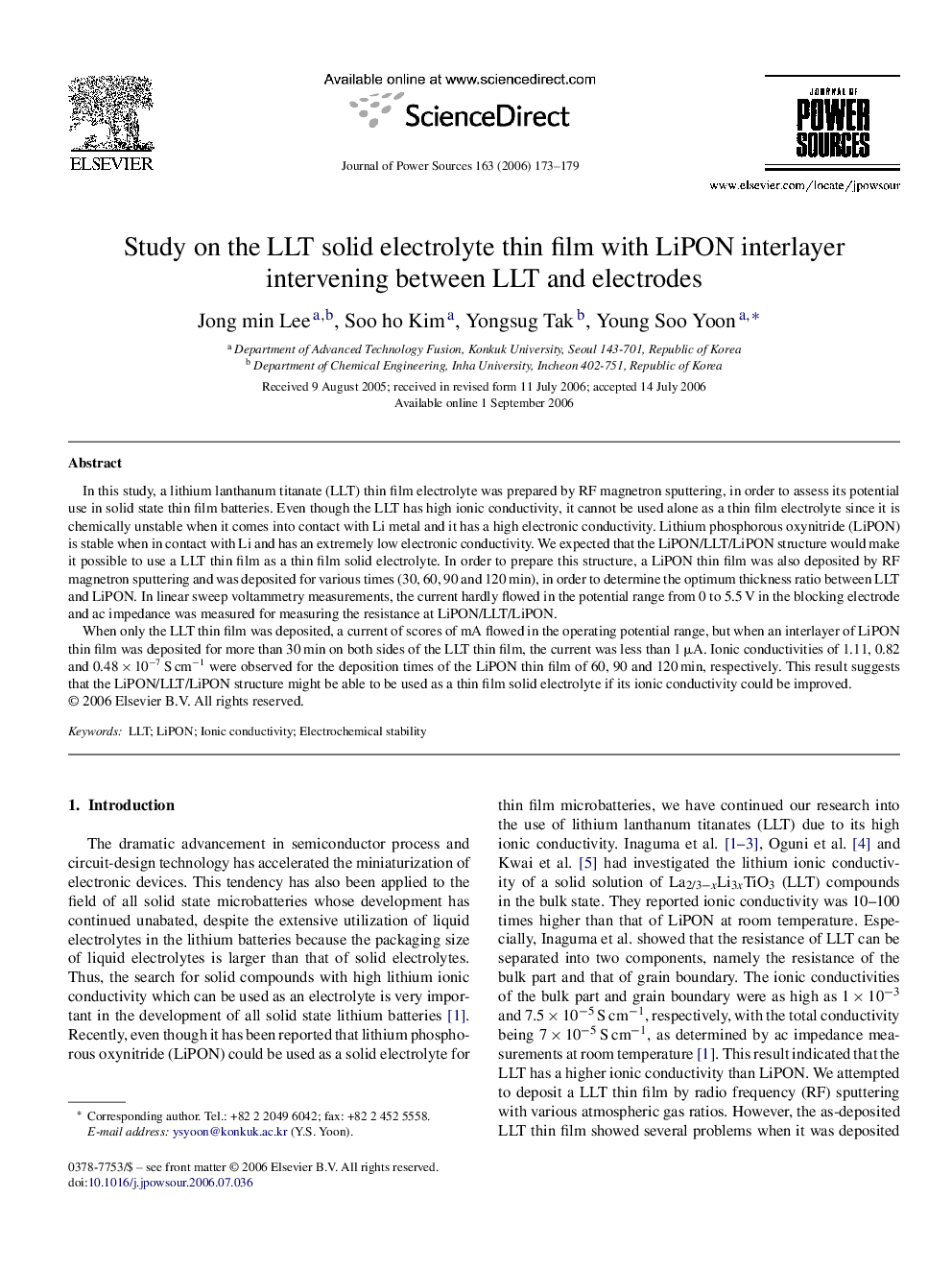| Article ID | Journal | Published Year | Pages | File Type |
|---|---|---|---|---|
| 1291069 | Journal of Power Sources | 2006 | 7 Pages |
In this study, a lithium lanthanum titanate (LLT) thin film electrolyte was prepared by RF magnetron sputtering, in order to assess its potential use in solid state thin film batteries. Even though the LLT has high ionic conductivity, it cannot be used alone as a thin film electrolyte since it is chemically unstable when it comes into contact with Li metal and it has a high electronic conductivity. Lithium phosphorous oxynitride (LiPON) is stable when in contact with Li and has an extremely low electronic conductivity. We expected that the LiPON/LLT/LiPON structure would make it possible to use a LLT thin film as a thin film solid electrolyte. In order to prepare this structure, a LiPON thin film was also deposited by RF magnetron sputtering and was deposited for various times (30, 60, 90 and 120 min), in order to determine the optimum thickness ratio between LLT and LiPON. In linear sweep voltammetry measurements, the current hardly flowed in the potential range from 0 to 5.5 V in the blocking electrode and ac impedance was measured for measuring the resistance at LiPON/LLT/LiPON.When only the LLT thin film was deposited, a current of scores of mA flowed in the operating potential range, but when an interlayer of LiPON thin film was deposited for more than 30 min on both sides of the LLT thin film, the current was less than 1 μA. Ionic conductivities of 1.11, 0.82 and 0.48 × 10−7 S cm−1 were observed for the deposition times of the LiPON thin film of 60, 90 and 120 min, respectively. This result suggests that the LiPON/LLT/LiPON structure might be able to be used as a thin film solid electrolyte if its ionic conductivity could be improved.
